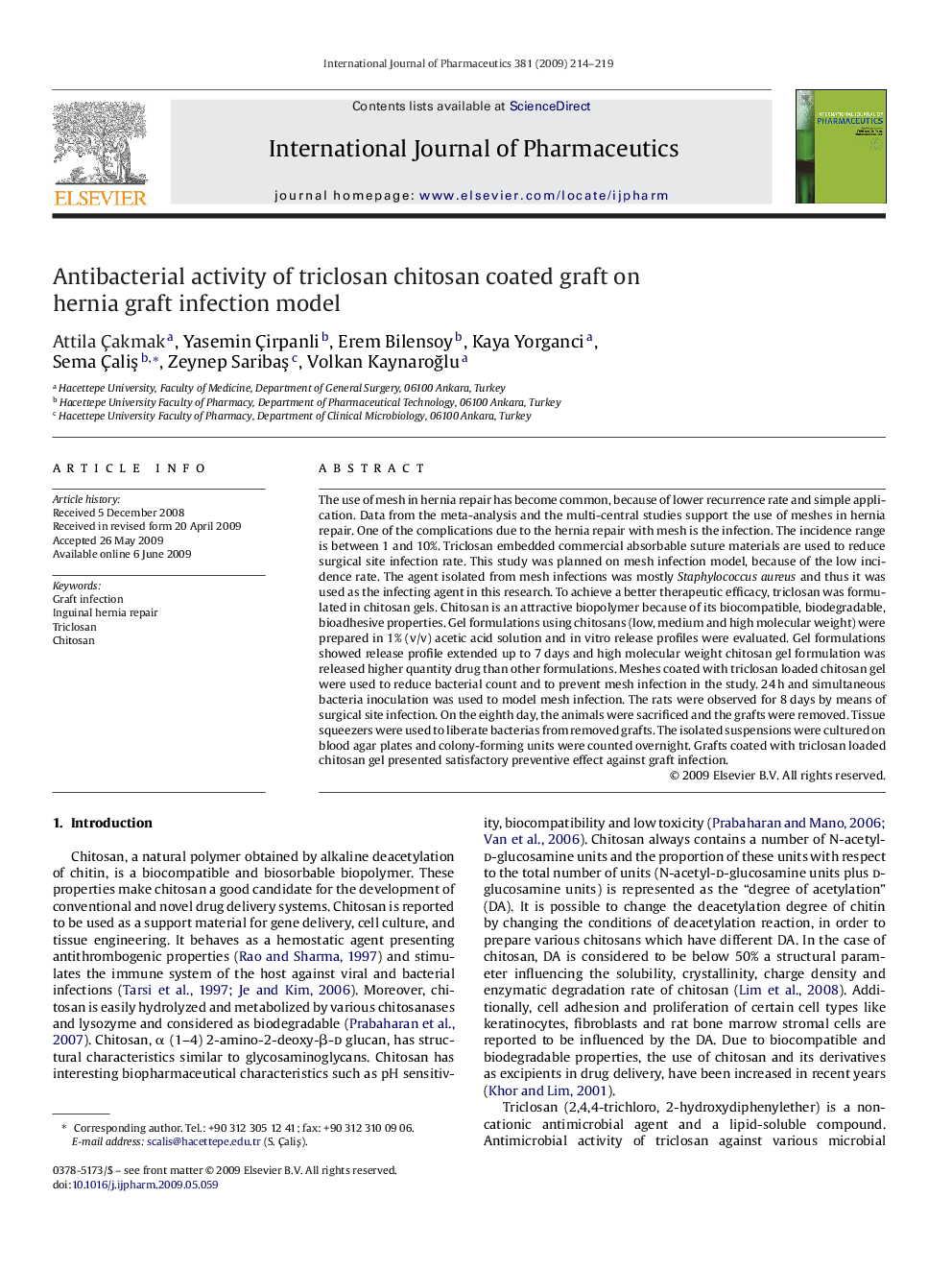| Article ID | Journal | Published Year | Pages | File Type |
|---|---|---|---|---|
| 2504453 | International Journal of Pharmaceutics | 2009 | 6 Pages |
The use of mesh in hernia repair has become common, because of lower recurrence rate and simple application. Data from the meta-analysis and the multi-central studies support the use of meshes in hernia repair. One of the complications due to the hernia repair with mesh is the infection. The incidence range is between 1 and 10%. Triclosan embedded commercial absorbable suture materials are used to reduce surgical site infection rate. This study was planned on mesh infection model, because of the low incidence rate. The agent isolated from mesh infections was mostly Staphylococcus aureus and thus it was used as the infecting agent in this research. To achieve a better therapeutic efficacy, triclosan was formulated in chitosan gels. Chitosan is an attractive biopolymer because of its biocompatible, biodegradable, bioadhesive properties. Gel formulations using chitosans (low, medium and high molecular weight) were prepared in 1% (v/v) acetic acid solution and in vitro release profiles were evaluated. Gel formulations showed release profile extended up to 7 days and high molecular weight chitosan gel formulation was released higher quantity drug than other formulations. Meshes coated with triclosan loaded chitosan gel were used to reduce bacterial count and to prevent mesh infection in the study. 24 h and simultaneous bacteria inoculation was used to model mesh infection. The rats were observed for 8 days by means of surgical site infection. On the eighth day, the animals were sacrificed and the grafts were removed. Tissue squeezers were used to liberate bacterias from removed grafts. The isolated suspensions were cultured on blood agar plates and colony-forming units were counted overnight. Grafts coated with triclosan loaded chitosan gel presented satisfactory preventive effect against graft infection.
